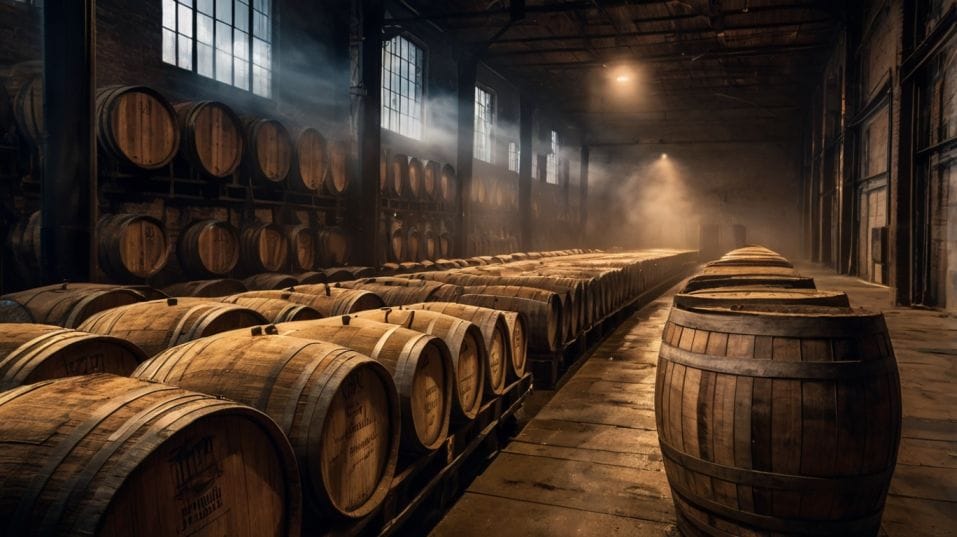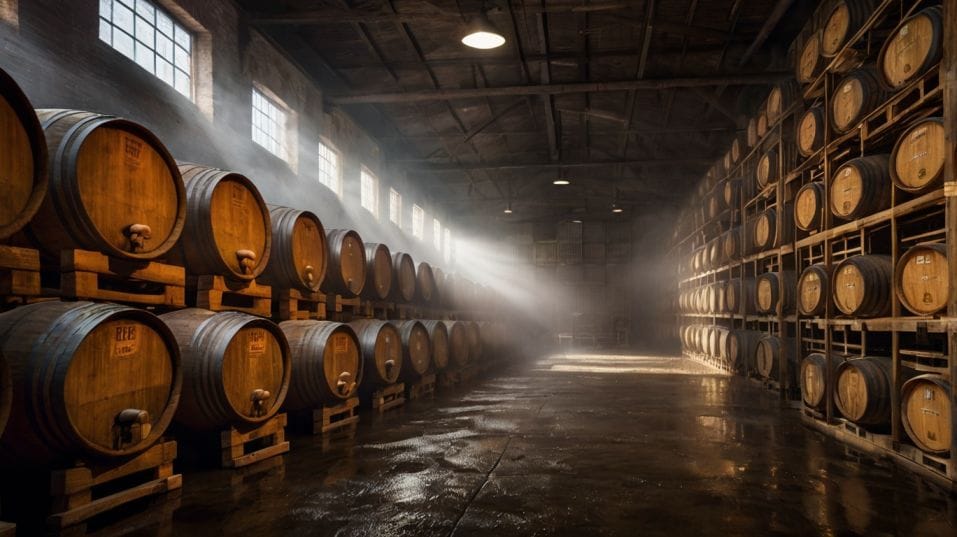The Science of Angel’s Share (And Why It Costs You)
Discover how whiskey’s 'angel’s share' shapes flavor, price, and rarity—key insight for anyone who sips, collects, or invests with confidence.

Why does your favorite whiskey cost so much—before you even take a sip? Behind every bottle lies a quiet thief: evaporation. Known as the angel’s share, it steals volume year after year but leaves behind something richer.
This invisible process shapes flavor, price, and scarcity. If you’re diving into whiskey—collecting, sipping, or just learning—understanding this loss is your first step to drinking smarter.
What the Angel’s Share Really Is (And Why It’s Not Just Romantic)
The angel’s share refers to the portion of whiskey that evaporates from the cask during aging. It’s a poetic name for something harsh: loss.
From the moment whiskey is filled into oak barrels, it starts disappearing. As barrels breathe with changes in temperature and humidity, ethanol and water molecules slowly escape through the porous wood into the air.
This process is constant. It doesn’t pause for holidays, global supply chains, or your wallet. Depending on the climate, a distillery can lose anywhere from 1% to 5% of a barrel’s volume per year.
Multiply that over a 10-, 15-, or 20-year aging period, and the volume loss is staggering. Some casks lose over half their original contents before they’re bottled. And yet, that loss is what makes whiskey worth drinking.
The angel’s share isn’t just about evaporation—it’s about transformation. As some of the spirit escapes, what remains concentrates and matures. The alcohol calms.
The rough edges smooth out. Over time, flavors deepen, shift, and evolve into something more complex. Without the angel’s share, you wouldn’t get the layered profiles that define well-aged whiskey.
But here’s the catch: evaporation is only good in balance. Lose too much, too fast, and the spirit dries out, becomes over-oaked, or just disappears into thin air.
That’s why understanding how and where a whiskey aged is just as important as how long.

The Real Cost of Evaporation (And Who Pays for It)
Every year a barrel sits aging, the distillery is eating a loss. The longer it ages, the fewer bottles survive. That means older whiskey isn’t just more mature—it’s more rare. And rarity has a price.
This is one of the least appreciated truths in whiskey economics: the angel’s share affects not just the flavor in the glass, but the cost on the shelf. Every bottle of a 20-year expression is pulled from a cask that may have lost half its volume.
That means fewer bottles to sell, higher production costs, and increased scarcity. You’re not just paying for time—you’re paying for what’s no longer there.
Climate Changes Everything
Collectors need to think in those terms. The price of older whiskey isn't inflated by hype alone. It's a direct result of this slow attrition.
If you're buying to build a collection or investing for long-term value, understanding angel’s share gives you context. That $300 bottle might not be overpriced—it might just be a survivor.
And it’s not just age that matters. Climate plays a huge role. In cooler, damp environments like Scotland, the angel’s share might hover around 1–2% per year.
In hotter, drier climates—think Kentucky, Texas, or Taiwan—it can spike up to 4–5%. Whiskey aged in those regions matures faster but also loses more, which makes older bottlings from those areas even more precious (and volatile).
This is why some 8-year whiskeys from Texas or India taste more mature than 15-year Scotch—climate accelerates aging, and the angels get their due faster. But faster isn’t always better.
How It Shapes Flavor (And What to Watch For)
A well-aged whiskey doesn’t just taste older—it tastes integrated. Rich. Balanced. The kind of complexity that feels earned. That’s partly because of how evaporation concentrates flavor compounds in the barrel.
But concentration alone doesn’t make a whiskey great. You need harmony. If the barrel loses moisture too quickly, the whiskey can become overly woody, dry, or tannic.
If alcohol evaporates faster than water, it can mellow prematurely, losing backbone. The best aging conditions let a whiskey breathe in oxygen, absorb flavor from the oak, and lose just enough volume to refine—not ruin—the profile.
Learning to Taste the Journey
When you taste whiskey, you’re tasting that whole evolution. Listen to how the flavors hit. Are the fruit notes vibrant or faded? Does the oak support the palate, or overpower it? Does the finish collapse or stretch out cleanly?
The more you train your palate, the more you’ll detect how well the aging process played out. A whiskey that’s been aged just right will taste confident. Focused. Alive. You won’t need to be told it’s special—you’ll feel it in the glass.
Smart Collecting: Use the Angel’s Share to Your Advantage
If you’re serious about collecting whiskey—whether it’s for tasting, trading, or investing—understanding evaporation gives you an edge. Every bottle is a reflection of how well the barrel held up through the years.
The Details That Matter
Look beyond age statements. Ask questions: Where was it aged? What kind of warehouse was it stored in—brick, metal, climate-controlled? How full was the cask at bottling? Was it a single barrel or part of a vatting?
That kind of info gives you insight into both quality and scarcity. For example, single casks that yield very few bottles (due to evaporation) are inherently more collectible.
They’re harder to find, and often more expressive. But you also need to trust the cask management—if too much was lost, the remaining spirit might be imbalanced.
Watch for distilleries that disclose maturation details openly. That kind of transparency usually signals good barrel stewardship. It tells you they’re not just chasing age—they’re managing it with precision.
And if you’re buying to drink, not just display, learn to taste past the label. A 12-year from the right warehouse can outperform an 18-year from a poorly managed one. Always let your palate, not the number, guide you.
Tasting With Intent: Don’t Waste What the Angels Left Behind
There’s something humbling about pouring a well-aged whiskey and realizing it was once twice its volume. That what's in your glass is what survived. The rest vanished into air and time.
So take your time with it. Let it open. Don’t drown it in ice. Don’t rush the nose. Swirl it in your glass and let the layers speak.
That drop of leather? Years in oak. That faint dried apricot? Concentrated through evaporation. That long, spicy finish? It wasn’t free. You’re tasting years of slow change—of evaporation, oxidation, interaction.
Learning to detect those nuances is how you move from casual drinker to confident taster. And the better you taste, the better you collect.
Final Thoughts: What the Angels Take, You Gain
The angel’s share isn’t just lost whiskey—it’s the cost of transformation. It’s why your favorite bottle tastes the way it does, why it costs what it does, and why some barrels never make it to market.
So the next time you reach for a new whiskey, think bigger than the label. Ask what was lost to get what’s left. Consider the climate, the cask, the chemistry. Let that knowledge shape how you taste, collect, and talk about whiskey.
Don’t just drink. Learn from the loss. Explore what’s left. Open something tonight, and taste the time it took to get there.




